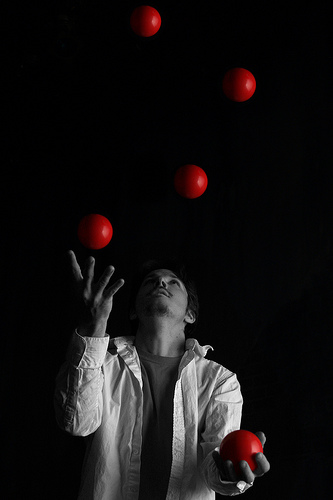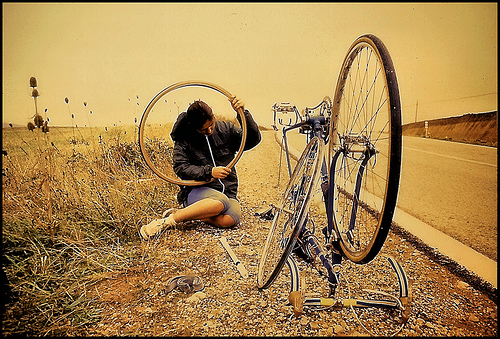
I’m big on using writing as a tool for mindfulness and self-understanding: I do a lot of sitting down to write out what my thoughts and experiences have been on certain problem topics (whatever I’m working on in my life at that point in time) and using tools I’ve acquired, like idea repair and identifying mental schemas to figure out what’s going right, what’s going wrong, and what I can do to improve things. Yesterday, in the middle of this process, I suddenly became distracted.
And now for something completely different …
I was writing about a situation that had been frustrating me and had gotten to the point of saying “OK, I don’t know what’s going on there, but it sure is frustrating.” Sometimes I stop at that point if I don’t have any further insights. In this case, I hadn’t really thought the thing through very well, so I didn’t know whether or not I had further insights. Before I could figure that out, I found myself thinking about some entertaining distractions on the Internet, a new little project I could start, and wanting to check my e-mail. Since I was fortunately already trying to pay attention to my thoughts, I pulled myself up short. What was going on with me? I was doing meaningful self-examination, and then suddenly I want to go see what’s on YouTube? Was I trying to distract myself from something?
Having that thought, I was immediately inclined to drop the subject. It was as though I had walked up to a door and found a sign on it saying “Go away! We don’t want any!” Since this was happening (metaphorically) in my own brain, that seemed like a red flag to me–and also, I just like being contrary. So I opened the door and looked around. When I did, I came face to face with the overcommitment problem I’d been mulling over recently and one of the hidden ways it has been affecting me.
Schema avoidance
So what had happened was that the thinking I was doing led me to make a connection between some of my behaviors and overcommitment, but as soon as I got close to that connection, I automatically started distracting myself. There’s a name for this phenomenon. In schema therapy, it’s a “schema coping style” called “schema avoidance.”
Avoidance takes any number of forms: it can be television, surfing the Web, extreme sports, reading, going out with friends, eating, drug abuse, drinking, or anything else that can keep a person’s attention well enough to block some other thought or feeling. It can even be something constructive, like doing the dishes or working out.
Unfortunately, coping styles (like avoidance) don’t tell us much about what the underlying problem is. The fact that I was avoiding something only told me that there was something wrong, not what kind of thing it was.
It’s worth thinking how much this has to do with procrastination. In our culture, we tend to think of work as being something we would naturally want to avoid, but there’s nothing inherently painful about work, and often other problems–like fear of failure, perfectionism, or negativity–cause us to want to distract ourselves from working.
Opening the door marked “do not enter”
So learning about ourselves when we notice we’re being avoidant means facing the avoidance and consciously choosing to stay on task, to keep thinking or talking or feeling or investigating whatever it was that set us off. If I go to open my mail and suddenly have the idea that it would be fun to go out ice skating or that it’s time to watch a new DVD, then there’s a good chance that there’s something about the mail that triggers one of my mental schemas. If at that point I want to grow as a person and get past my current life obstacles, then the thing for me to do is to go to the mail, open it, and be observant of and gentle with myself as I face whatever it is I don’t want to face.
Being observant is necessary if I’m going to understand myself better in order to change things. Being gentle is necessary because we’ve developed these schemas and coping styles for a reason: somewhere earlier in life, something along these lines was painful enough to force a schema to develop around it. If we want to unravel mental schemas that keep us from living a good life, we need to care for whatever part of us the schema is there to protect.
Got courage?
I understand this talk of being gentle with ourselves may be offputting to some readers, so I’d like to characterize it in another way: facing those things that disturb us even though doing so makes us uncomfortable and vulnerable requires focus, self-knowledge, and above all, courage. So if the thought of facing everything that makes you feel uncomfortable or bad in the world gives you a sudden urge to see what’s on TV, I don’t blame you–but I also wish you good luck pushing the avoidance aside and courageously moving forward.
Photo by rishibando











